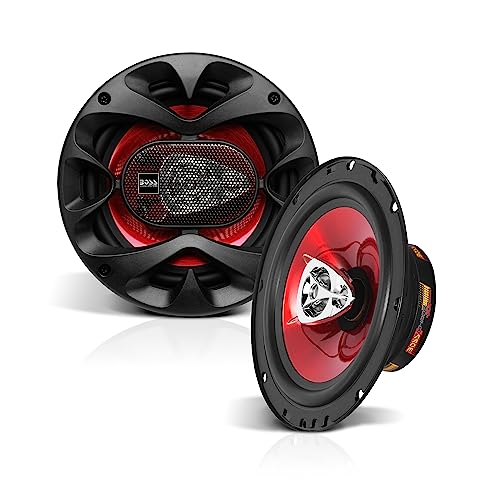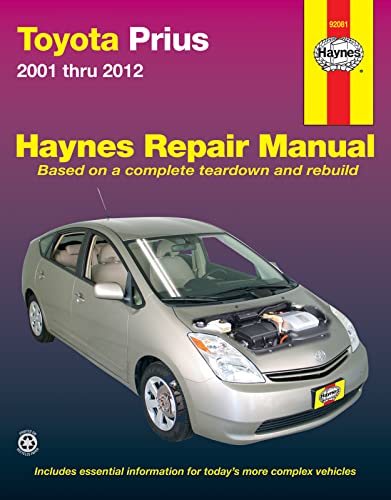As an Amazon Associate, I earn from qualifying purchases
If you drive a Toyota, you might be wondering, how long do struts last? Your struts play a big role in keeping your ride smooth and safe.
But like any part, they don’t last forever. Knowing when to check or replace them can save you from costly repairs and keep your car running comfortably. You’ll discover exactly how long Toyota struts typically last and the signs that tell you it’s time for a change.
Keep reading to protect your ride and avoid surprises on the road.
Role Of Struts In Toyota Vehicles
Struts play a key role in Toyota vehicles. They support the car’s weight and absorb shocks from the road. This helps keep the ride smooth and the car stable. Struts also affect how the vehicle handles turns and stops. Properly working struts improve safety and comfort.
Understanding the role of struts helps you know why they need maintenance. Toyota designs struts to last long and perform well. Knowing their function and types can help you spot issues early.
Functions Of Struts
Struts hold the vehicle’s weight and keep tires on the road. They absorb bumps, reducing impact on the car and passengers. Struts also help control the car’s movement during turns and stops. They maintain alignment and improve steering response. Without good struts, driving becomes rough and unsafe.
Types Of Struts Used By Toyota
Toyota uses mainly two types of struts: twin-tube and monotube. Twin-tube struts are common in many models. They provide a soft ride and good durability. Monotube struts offer better performance and heat dissipation. Higher-end Toyota models often use monotube struts. Both types are designed for safety and comfort.

Credit: carspecmn.com
Average Lifespan Of Toyota Struts
The average lifespan of Toyota struts depends on many factors. Struts play a key role in vehicle safety and comfort. Knowing how long they last helps plan maintenance and avoid sudden problems.
Struts usually wear down over time due to road conditions and driving habits. Tracking their lifespan ensures your Toyota stays smooth and stable on the road.
Typical Mileage Expectations
Toyota struts typically last between 50,000 and 100,000 miles. This range varies with the model and driving conditions. Some drivers may notice wear closer to 50,000 miles. Others might go beyond 100,000 miles before replacement is needed. Regular checks can catch wear early. Signs include unusual noises or rough rides.
Time-based Durability Factors
Struts also age over time, even if mileage is low. Rubber parts inside struts dry out and crack. Exposure to heat and moisture speeds up wear. Usually, struts last about 6 to 10 years. Vehicles used in harsh climates may need earlier replacement. Driving on rough roads also reduces strut life. Checking struts yearly helps keep your Toyota safe and comfortable.
Factors Affecting Strut Longevity
Strut longevity in Toyota vehicles depends on several key factors. These elements influence how long your struts will perform well. Understanding these can help you take better care of your car. It also helps in planning timely replacements to avoid bigger problems.
Driving Conditions
Road quality greatly affects strut life. Rough, bumpy roads cause faster wear and tear. Potholes and uneven surfaces put extra pressure on struts. Smooth highways help struts last longer. Weather also plays a role. Extreme heat or cold can weaken strut components over time.
Maintenance Habits
Regular vehicle checks extend strut life. Inspecting struts for leaks or damage prevents failure. Timely replacement of worn parts helps struts work better. Proper tire alignment reduces strain on struts. Ignoring maintenance leads to quicker strut wear.
Vehicle Load And Usage
Car weight affects how fast struts wear out. Heavier loads strain the suspension system more. Frequent carrying of heavy cargo shortens strut life. Off-road driving or towing adds extra stress. Using the vehicle gently helps maintain strut health longer.

Credit: www.shocksurplus.com
Signs Your Toyota Struts Need Replacement
Struts play a key role in your Toyota’s suspension system. They keep the ride smooth and help with handling. Over time, struts wear out and need replacement. Knowing the signs can save you from bigger problems.
Common Symptoms
One clear sign is a bouncy or shaky ride. Your Toyota may bounce more after going over bumps. You might hear clunking or knocking noises from the suspension area. Tires may wear unevenly or faster than usual. Steering could feel loose or less responsive. Fluid leaks near the struts also indicate damage.
Impact On Vehicle Performance
Worn struts reduce your Toyota’s stability on the road. Braking distance can increase, making stops less safe. Cornering might feel unstable or wobbly. Poor struts cause more body roll during turns. Overall, your driving comfort and control drop significantly.
Tips For Extending Strut Life
Struts are vital for your Toyota’s smooth ride and safety. Extending their life saves money and keeps your car steady. Follow these simple tips to help your struts last longer and perform better. Taking care of them means fewer repairs and a safer drive.
Regular Inspections
Check your struts often for signs of wear or damage. Look for leaks, dents, or unusual noises. Early detection stops small problems from growing. Schedule inspections during oil changes or tire rotations. A quick look can save you from costly repairs.
Driving Practices
Drive gently over bumps and potholes. Avoid sharp turns and sudden stops. Slow down on rough roads to reduce stress on struts. Smooth driving reduces wear and tear. Careful driving helps your struts last much longer.
Timely Repairs
Fix any strut issues as soon as possible. Delaying repairs can cause more damage. Replace worn struts promptly to keep your car safe. Timely fixes keep your suspension system working well. Don’t wait until problems get worse.
Choosing Replacement Struts For Toyota
Choosing replacement struts for your Toyota affects your car’s safety and comfort. Struts help control the vehicle’s movement and absorb shocks from the road. Picking the right struts ensures smooth driving and longer vehicle life.
Consider quality, price, and installation when selecting struts. These factors impact how well your Toyota performs after replacement.
Oem Vs Aftermarket Options
OEM stands for Original Equipment Manufacturer. These struts come from Toyota or its trusted suppliers. They fit perfectly and maintain the car’s original feel. Aftermarket struts come from other companies. They may cost less but vary in quality. Some aftermarket parts work well, but others wear out faster. Choose based on budget and how long you want the struts to last.
Cost Considerations
OEM struts usually cost more than aftermarket ones. The price reflects quality and exact fit. Aftermarket struts offer budget-friendly choices. Beware of very cheap options. They might need replacing sooner, adding more cost later. Balance price and durability for the best value.
Professional Installation Benefits
Installing struts requires skill and special tools. Professionals know how to fit and align them correctly. Poor installation can cause poor handling and faster wear. Experts save time and prevent mistakes. They ensure your Toyota drives safely and smoothly after replacement.
Toyota Models With Notable Strut Durability
Toyota is known for making cars with strong and lasting parts. Struts are one part that many drivers check carefully. Some Toyota models have struts that last a long time without problems. This section shows which Toyota cars have struts that stand the test of time.
Knowing which Toyota models have durable struts helps when choosing a car. It also helps if you want to avoid frequent repairs. Below, we explore popular models and what drivers say about their strut life.
Popular Models And Their Performance
The Toyota Camry is famous for strong struts. Many drivers report over 100,000 miles without strut issues. The Corolla also has durable struts, lasting many years in daily use.
The RAV4, a popular SUV, has struts designed for rough roads. This helps them last longer under tough conditions. The Tacoma truck is known for tough struts that handle heavy loads well.
User Reviews And Feedback
Many Toyota owners say struts last more than expected. Some drivers mention struts lasting beyond 120,000 miles. Few complaints about early strut failure appear in forums.
Users also praise the smooth ride from good struts. Repairs for struts happen less often than in other brands. Overall, Toyota’s strut durability gets positive feedback from owners.

Credit: www.youtube.com
Frequently Asked Questions
How Long Do Toyota Struts Typically Last?
Toyota struts usually last between 50,000 and 100,000 miles depending on driving conditions.
What Signs Show Toyota Struts Need Replacement?
Common signs include bumpy rides, nose-diving when braking, and uneven tire wear.
Can Bad Struts Affect Toyota’s Fuel Efficiency?
Yes, worn struts can reduce fuel efficiency by causing poor tire contact and drag.
How Often Should Toyota Struts Be Inspected?
Struts should be checked every 30,000 miles or during regular vehicle maintenance visits.
Do Toyota Struts Wear Out Faster On Rough Roads?
Driving on rough roads can shorten strut life due to increased stress and damage.
Is It Safe To Drive Toyota With Worn Struts?
Driving with bad struts is unsafe as it lowers vehicle control and braking ability.
Conclusion
Struts in a Toyota usually last between 50,000 and 100,000 miles. Driving habits and road conditions affect their lifespan a lot. Worn struts can cause bumpy rides and poor handling. Regular checks help keep your car safe and smooth. Replace struts when you notice noise or uneven tire wear.
Taking care of struts saves money on bigger repairs later. Keep an eye on your vehicle’s performance to know when to act. Good struts make driving comfortable and safe.
As an Amazon Associate, I earn from qualifying purchases


